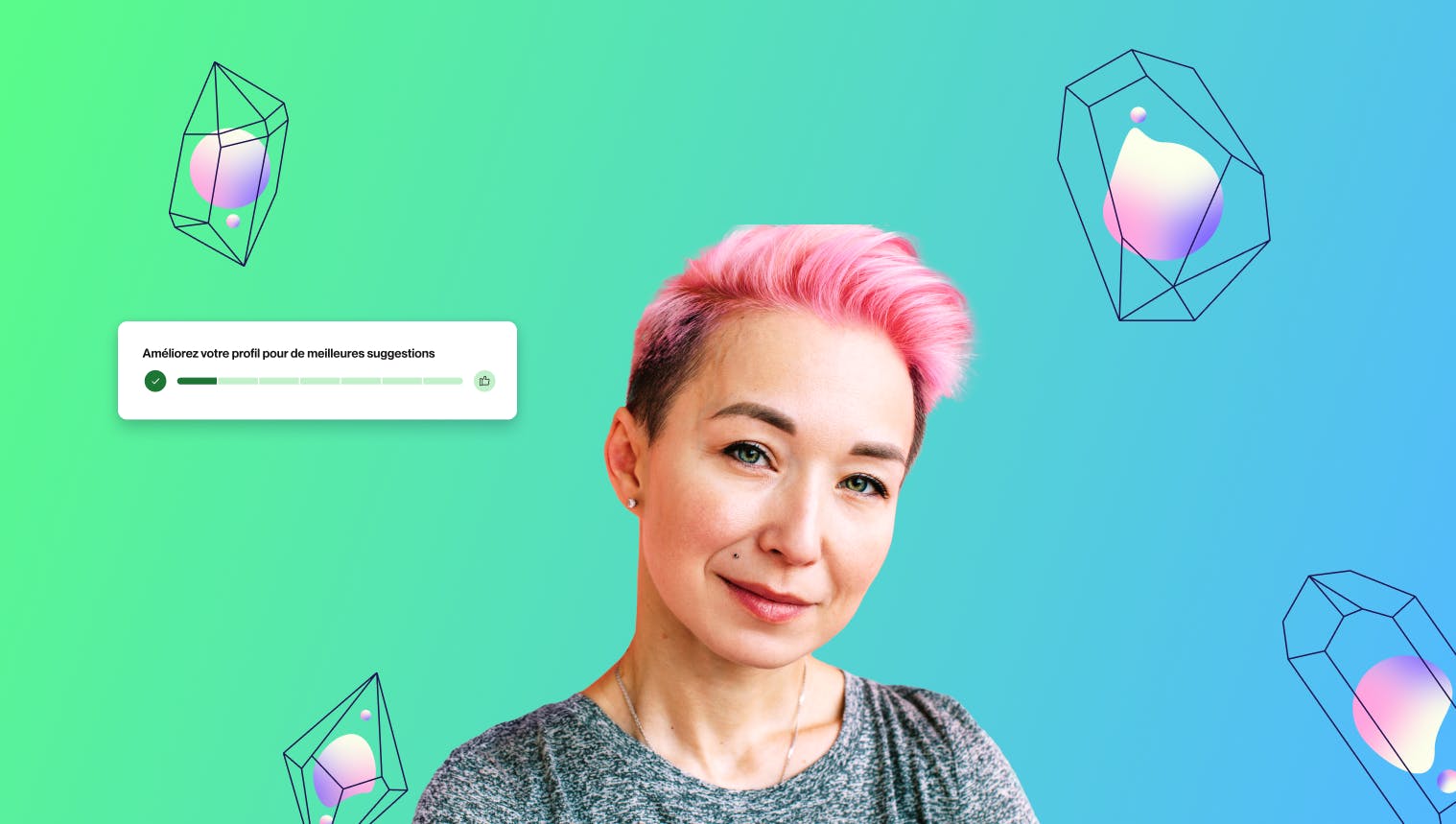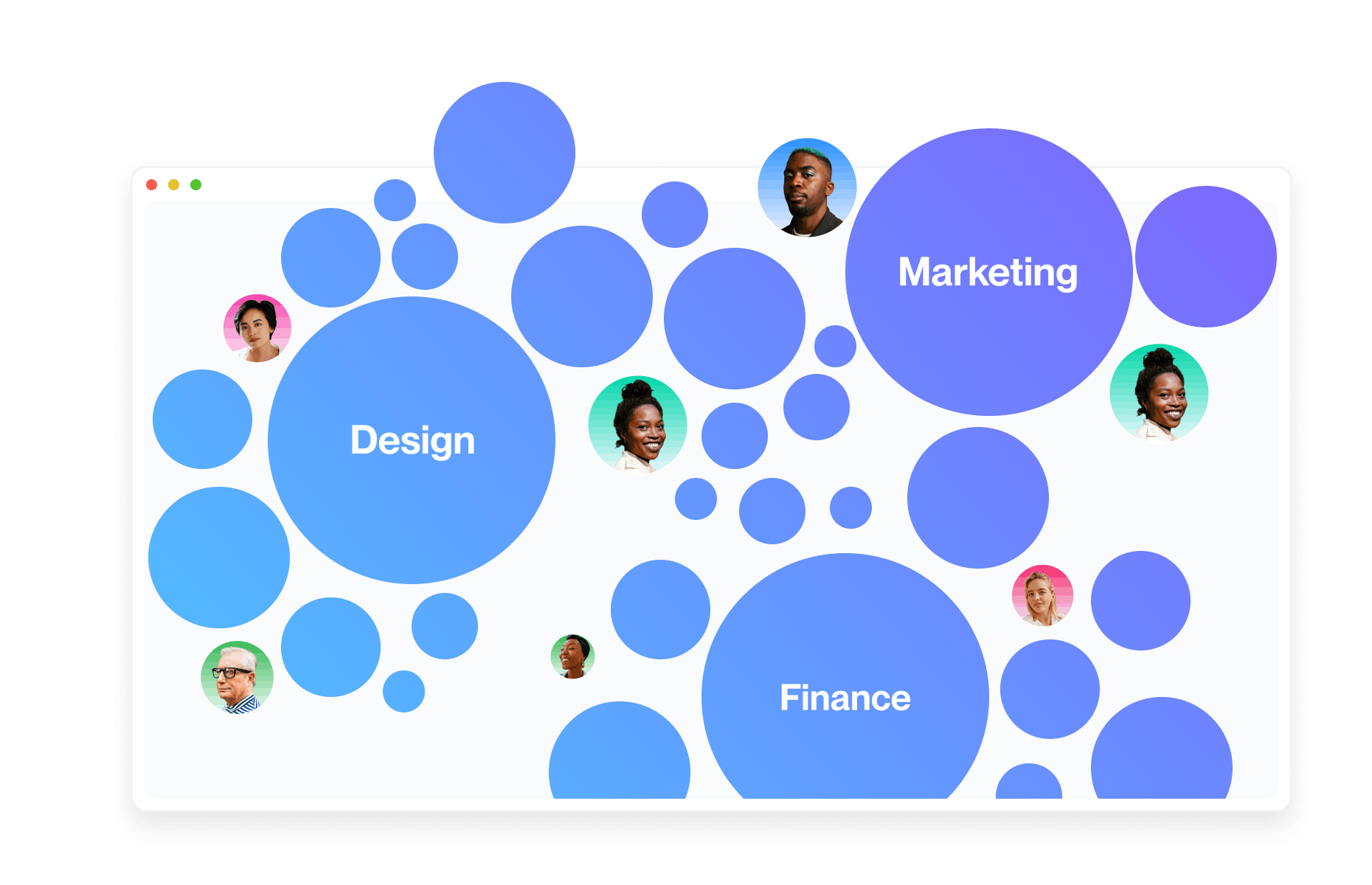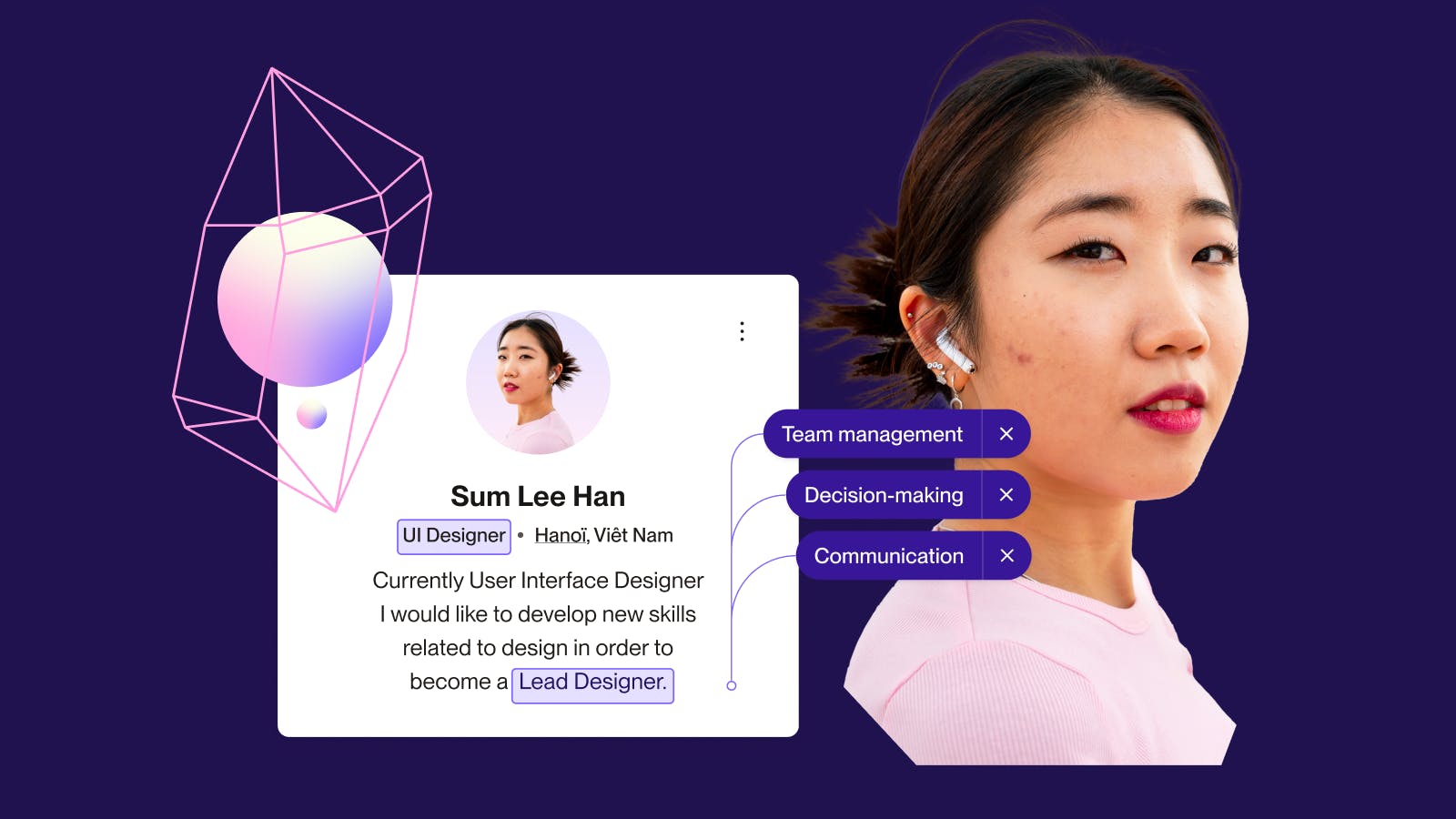Your comprehensive guide to "Skills Taxonomy"

It’s no surprise that organizations are increasingly shifting to a skills-based approach in today’s fast-paced, talent-driven economy. But at the heart of this transformation lies a key element: the Skills Taxonomy. This structured system organizes, defines, and categorizes the skills required to meet an organization’s objectives. In this guide we will cover everything HR leaders and businesses need to know about a Skills Taxonomy—from its definition and role to the steps involved and its importance for a skills-based organization.
What is a Skills Taxonomy?
Definition of skills taxonomy
A Skills Taxonomy is a comprehensive, structured framework that classifies and organizes the specific skills within an organization. Much like a dictionary for competencies, it breaks down the skill sets into categories and subcategories, mapping out the relationships between different skills. It includes definitions, proficiency levels, and sometimes associations to roles or functions, which creates a unified language for assessing and developing talent.
Benefits of skills taxonomy
Skills taxonomy helps organizations to have a better view of their company’s skills. Hence, they use it to improve workforce planning, employee development initiatives, career pathing, recruitment processes, and performance management systems.
Skills Taxonomy, Skills Ontology, and Skills Framework: What are the differences?
Skills Taxonomy, Skills Ontology, and Skills Framework are often used interchangeably but serve distinct functions in the context of talent management and skills-based organizations. Understanding the differences between them is key to optimizing your HR strategy.
Skills Taxonomy
Purpose: A skills taxonomy is ideal for structuring an organization's various skills requirements, making it easier for HR to identify, assess, and track talent effectively.
Key features:
- Hierarchy and categorization: Skills are grouped into broad categories and subcategories (e.g., technical skills, soft skills).
- Proficiency levels: This often includes defining expertise levels for each skill (e.g., beginner, intermediate, advanced).
- Simplified structure: A taxonomy focuses on classifying skills but doesn’t typically account for complex relationships between them.
Example: In a skills taxonomy, data science would fall under the broader category of technical skills, with sub-skills like Python programming, data analysis, and machine learning.
Skills Ontology
A Skills Ontology goes beyond a taxonomy by not only classifying skills but also mapping their relationships and interdependencies. It’s a more complex and dynamic model that considers the broader context in which skills are used.
Purpose: A skills ontology is crucial for advanced talent management, enabling HR to analyze how skills interact within job roles and across different functions. It’s especially valuable for AI-driven platforms, allowing a more nuanced matching between skills, roles, tasks, or career paths.
Key Features:
- Network of relationships: An ontology maps how skills relate with each other, withroles, tasks, industries, and even qualifications. It can show, for example, "data analysis" supports "decision-making" and is essential for roles in business intelligence.
- Contextual understanding: It offers a deeper understanding of the dependencies and interactions between skills. For instance, mastering machine learning might require proficiency in both mathematics and Python.
- Dynamic structure: Unlike a static taxonomy, an ontology evolves as new relationships or skills emerge, adapting to changing needs.
Example: A skills ontology would categorize data science as a core skill and map its connections to related skills like statistics, Python programming, and cloud computing. It would also link theset skills to relevant job roles like Data Scientist, Business Analyst, or AI Engineer.
Skills Framework
A Skills Framework provides a standardized model for defining, assessing, and developing skills. It outlines competency levels, behavioral indicators, and performance standards for each skill, acting as a benchmark for skills development across industries or with specific companies. With this, organizations can identify skills gaps and foster personalized skills and career development.
Purpose: A skills framework is used for skills assessment, talent development, and performance management. It helps organizations evaluate employees' proficiency in specific areas and shapes learning and development programs.
Key features:
- Competency levels: A framework defines precise levels of mastery for each skill (e.g., foundational, proficient, expert).
- Behavioral indicators: These identify specific behaviors or actions demonstrating proficiency at each skill level.
- Standardization: Skills frameworks are typically industry-specific or organizationally-specific and provide a consistent benchmark for assessing skills across different contexts.
Example: A leadership skills framework might define competencies like strategic thinking or team management, breaking them down into measurable behaviors that indicate different proficiency levels.
Key Differences

- Skills Taxonomy: When you need a primary classification of skills for recruitment, workforce planning, and learning programs.
- Skills Ontology: When you want to capture complex relationships between skills, roles, and tasks, especially in AI-driven systems or for advanced talent matching.
- Skills Framework: When you require a standardized way to assess skills, develop talent, or benchmark employees' competencies across the organization.
Each system—taxonomy, ontology, and framework—serves a unique function but can work together to create a holistic talent management strategy. A taxonomy provides structure, an ontology adds context, and a framework offers a standardized assessment and development of skills.








Why is Skills Taxonomy essential for HR and managers?
The impact of digital transformation on the global workforce is a topic that has been discussed for over a decade. However, with projections of 85 million jobs being displaced and 97 million new roles emerging by 2025, it's clear we need a fundamental shift in understanding and addressing this issue.
Shifting from a role-based to a skills-based approach is vital in overcoming limitations in traditional workforce management. While roles and job descriptions have simplified employee responsibilities, this method is slow due to inaccessible skills data, managers' bias, and insufficient detail for decision-making in tech-driven environments.
A skills-based approach focuses on individuals' granular skills, providing a centralized, transparent view that enables better talent utilization across functions and departments.
How to use Skills Taxonomy in HR and businesses
Talent Acquisition & Recruitment:
A skills taxonomy helps recruiters identify the exact skill sets needed for specific roles. By focusing on skill-based hiring, HR can widen the talent pool by moving away from traditional job titles and degrees, instead emphasizing relevant capabilities.
Learning & Development (L&D):
Skills taxonomies provide a roadmap for employee upskilling and reskilling efforts. With a clear understanding of the required skills, L&D programs can be designed to close skill gaps, optimize employee development, and promote continuous learning aligned with business needs.
Performance Management & Career Pathing:
Employees can better understand their career paths and growth opportunities through a transparent taxonomy. This enables managers to provide more targeted feedback and support and guide employees on how to advance by developing specific competencies.
Workforce Planning & Organizational Agility:
In dynamic markets, organizations need to be agile. A robust skills taxonomy allows HR to identify emerging abilities and predict future talent needs, ensuring the workforce evolves with market trends.
Diversity, Equity, and Inclusion (DEI):
Skills-based approaches level the playing field by focusing on competencies rather than traditional credentials. This can promote more diverse hiring practices and encourage internal mobility for underrepresented talent who may have non-traditional backgrounds.

6 Steps to build a Skills Taxonomy
Building a well-structured skills taxonomy requires thoughtful planning and a data-driven approach. Below are the steps to create an effective taxonomy tailored to your organization's needs:
1. Identify organizational objectives and key skills
Start by identifying your organization's core objectives and the skills critical to achieving them. Collaborate with department heads and subject matter experts to gather a comprehensive list of required skills across different teams and functions. Consider hard skills (e.g., data analysis, coding) and soft skills (e.g., communication, leadership).
2. Group skills into categories
Organize your skills into broader categories and subcategories. For example:
- Technical Skills: Data analytics, cloud computing, programming languages.
- Interpersonal Skills: Communication, negotiation, conflict resolution.
- Leadership Skills: Strategic thinking, team management, decision-making.
Ensure your categories are exhaustive but easy to navigate without over-complicating the framework.
3. Define skill proficiency levels
For each skill, define the various levels of proficiency required. These levels should indicate increasing complexity or responsibility, helping to track an employee’s growth. A standard method is to use a three- or five-tier system such as:
- Beginner
- Intermediate
- Advanced
- Expert
- Mastery
Proficiency definitions should be consistent across skills to ensure clarity.
4. Map skills to roles and functions
Align the skills in your taxonomy with specific job roles and functions. This creates a dynamic link between roles and the capabilities required, which helps in workforce planning, talent assessments, and training initiatives. Keep in mind that some skills will overlap between different roles.
5. Integrate skills taxonomy into HR technology
Leverage HR technology such as HRIS (Human Resource Information Systems) and AI-powered talent platforms to build and manage the skills taxonomy. Advanced platforms can automate the classification of skills based on employee data, job descriptions, and industry trends, making it easier to update and maintain.
6. Continuously update the taxonomy
Skills are not static; they evolve as the market changes. Ensure that your skills taxonomy is a living document by reviewing it regularly and incorporating new skills that emerge with industry shifts, technological advancements, or changes in strategic priorities.
Benefits of a Skills Taxonomy in a Skills-Based Organization

Promotes a Skills-First culture
Transitioning to a skills-first mindset emphasizes the value of capabilities over job titles, degrees, or years of experience. By prioritizing what employees can accomplish rather than their formal qualifications, companies promote a culture of inclusivity and meritocracy. A well-structured taxonomy serves as the backbone for this transformation.
Facilitates targeted upskilling and reskilling
In today’s economy, continuously upskilling and reskilling employees is critical for staying competitive. A skills taxonomy helps organizations prioritize learning and development initiatives, ensuring employees acquire the right competencies to support business growth and innovation.
Closes skills gaps efficiently
Organizations with a detailed skills taxonomy can swiftly identify gaps within their workforce and address them through targeted hiring, training, or internal mobility programs. This strategic approach allows HR to deploy talent more effectively, minimizing the impact of skill shortages.
Improves internal mobility
A taxonomy encourages internal mobility by clearly mapping out the skills employees need for advancement. Employees can understand the skills required for various roles, allowing them to chart their career paths and take ownership of their professional development.
Enhances workforce agility
A skills taxonomy makes it easier for organizations to pivot in response to market changes or new business strategies. By quickly identifying employees with transferable skills, businesses can reassign talent to critical projects or functions, ensuring continuity and adaptability.
Supports Diversity, Equity, and Inclusion (DEI)
Since skills taxonomies emphasize capabilities rather than credentials, they open the door for a more diverse workforce. HR teams can focus on recruiting based on the skills necessary for success in a role, helping eliminate bias from the hiring process and increase opportunities for candidates from non-traditional backgrounds.
Role in building skills and job architecture
A skills taxonomy plays a crucial role in building both a skills architecture and a job architecture within an organization. It serves as the structured framework that categorizes, defines, and organizes skills in a clear and consistent way, enabling companies to align their talent management strategies with business needs.
A skills taxonomy lays the foundation for a skills architecture by:
- Identifying core competencies: It helps define the essential skills needed across various roles, making it easier to map out learning and development paths.
- Standardization: By creating a common language for skills, it ensures consistency when evaluating, acquiring, and developing talent.
- Career pathing & Development: Employees can see clear pathways for upskilling or reskilling, based on the required skills for roles they aspire to.
- Skills-Based Talent Management: It enables HR teams to focus on skills as the core metric for hiring, development, promotions, and workforce planning, helping move toward a skills-based organization.
In a job architecture, a skills taxonomy helps to:
Job design: It helps define job roles based on the skills needed rather than just traditional job titles or descriptions, aligning roles more closely with business goals.
Pay and progression models: It supports the creation of job levels and compensation frameworks by linking them to the specific skills required at each level.
Job evaluation: The taxonomy allows for more objective job evaluation, helping organizations compare roles and responsibilities across departments based on required skill sets rather than subjective criteria.
A skills taxonomy enables a more dynamic, data-driven approach to workforce planning by focusing on the evolving skills needed in the workforce and aligning job roles accordingly. It ensures that both job and skills architectures are adaptable to changing business needs and technological advancements.
365Talents offers an AI-powered solution designed specifically for HR teams to easily create a tailored skills and job architecture that align with your organization’s unique needs.
By blending advanced AI-driven technology with profound human expertise, we provide a customized framework that serves as a solid foundation for your skills and job architecture. Our solution supports your organization’s growth, seamlessly integrating with your systems while enhancing learning, performance, and workforce mobility.
No data? No problem.
Regardless of where you are in your data journey, 365Talents delivers the technology and expertise to help you build a unique skills and job architecture tailored to your organization.
We start by centralizing your job data, even if it's fragmented or incomplete. Our AI-powered platform organizes and structures this data, creating the first version of your job architecture while defining key skills and proficiency levels.
At the same time, we develop a comprehensive skills taxonomy that aligns with your roles. This includes dynamic visualizations of your skills and job data (Skills and Job Galaxies), highlighting relationships and skills gaps, and uncovering development opportunities across your workforce.
You can learn more about how we build your Skills and Job Architecture by booking your demo here.








Conclusion: Skills Taxonomy as a foundation for modern HR
As skills-based organizations continue to gain momentum, a robust Skills Taxonomy becomes a strategic asset. It drives more informed decision-making across HR functions—from recruitment to talent development and workforce planning. By building a clear and dynamic skills taxonomy, HR teams can enhance their workforce’s agility and position the organization for success in a rapidly changing world.
Next Steps:
- Assess your current skill needs.
- Build a tailored skills taxonomy.
- Implement it across your HR processes for a skills-first future.
By embracing a skills taxonomy, businesses are better equipped to navigate talent management in today’s complex landscape, shifting from job-centric to skill-based organizations.

FAQ
Where can I find data for my skills taxonomy?
Building a skills taxonomy can be complex, often involving hundreds or thousands of skills. First, focus on one department or workforce segment to validate the approach before scaling across the organization. Three strategies can help accelerate the process:
- Leverage open libraries: Use accessible, open-source taxonomies like ESCO or O*NET, which offer extensive skill sets.
- Leverage skills management vendors: Many vendors provide pre-built skill lists that streamline onboarding.
- Leverage existing organizational skill lists: Utilize past efforts within your organization to create a foundation that may align with current business needs.
How can I build a skills taxonomy?
Here are the 6 steps to build your skills taxonomy effectively:
- Identify key skills aligned with organizational goals, involving department heads and experts.
- Group skills into categories (e.g., technical, interpersonal, leadership).
- Define proficiency levels (e.g., Beginner, Intermediate, Expert) consistently across all skills.
- Map skills to roles for workforce planning and talent assessments.
- Integrate with HR technology for automated skill management and updates.
- Continuously update the taxonomy as industry and organizational needs evolve.
Discover more HR insights









